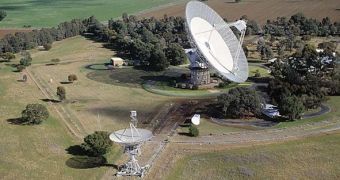Astronomers working on radio observatories in the United States are, at this point having a field day. Most television networks have moved to all-digital signals this June, and so a significant portion of the electromagnetic spectrum, on which they sent their signals before, has now been cleared of “chatter”. This is great news for telescopes, which are now able to use these frequencies for their own studies and in search for peculiar stars and other space structures. However, they have a very narrow window of opportunity, before mobile operators and other companies claim the cleared frequencies.
The 700 to 800 megahertz band was until now covered by TV signals, and astronomers had nothing to do but to renounce reading these frequencies with their equipment. Therefore, all objects that exist in space at this point and shed light in this wavelength range were invisible from Earth until June. Now, with this opening lasting for a few more months tops, the scientific community is struggling to make the best of it. The Puerto Rico-based Arecibo Observatory is one of the first instruments in the world to get a receiver for this type of frequencies installed. This will help its scientists make use of the newfound clarity, NewScientist reports.
In this frequency range, the galaxies that formed when the Universe was about half its current age, or around 7 billion years old, are becoming increasingly visible. Telescopes could therefore collect a wealth of data on a crucial intermediary step in the Universe's development, which could significantly further our understanding of the Cosmos. “It's a once-in-a-lifetime opportunity to see galaxies in that range. We're able to see an epoch that hasn't been observed before with radio eyes,” says Chris Salter, a researcher at the Arecibo Observatory.
Other experts are trying to use the opportunity to hunt for space objects that may be used to test the theory of general relativity once again. One pairing that would elevate Einstein to the rank of genius once again would be the discovery of a pulsar orbiting a black hole, a pairing that would again demonstrate the renowned physicist's proposal. In charge of this research are West Virginia University experts Duncan Lorimer and Mitch Mickaliger. Cornell University scientist Donald Campbell says that the window will most likely remain open for another year or so, after which time the frequencies will again be jammed with human communication.

 14 DAY TRIAL //
14 DAY TRIAL //